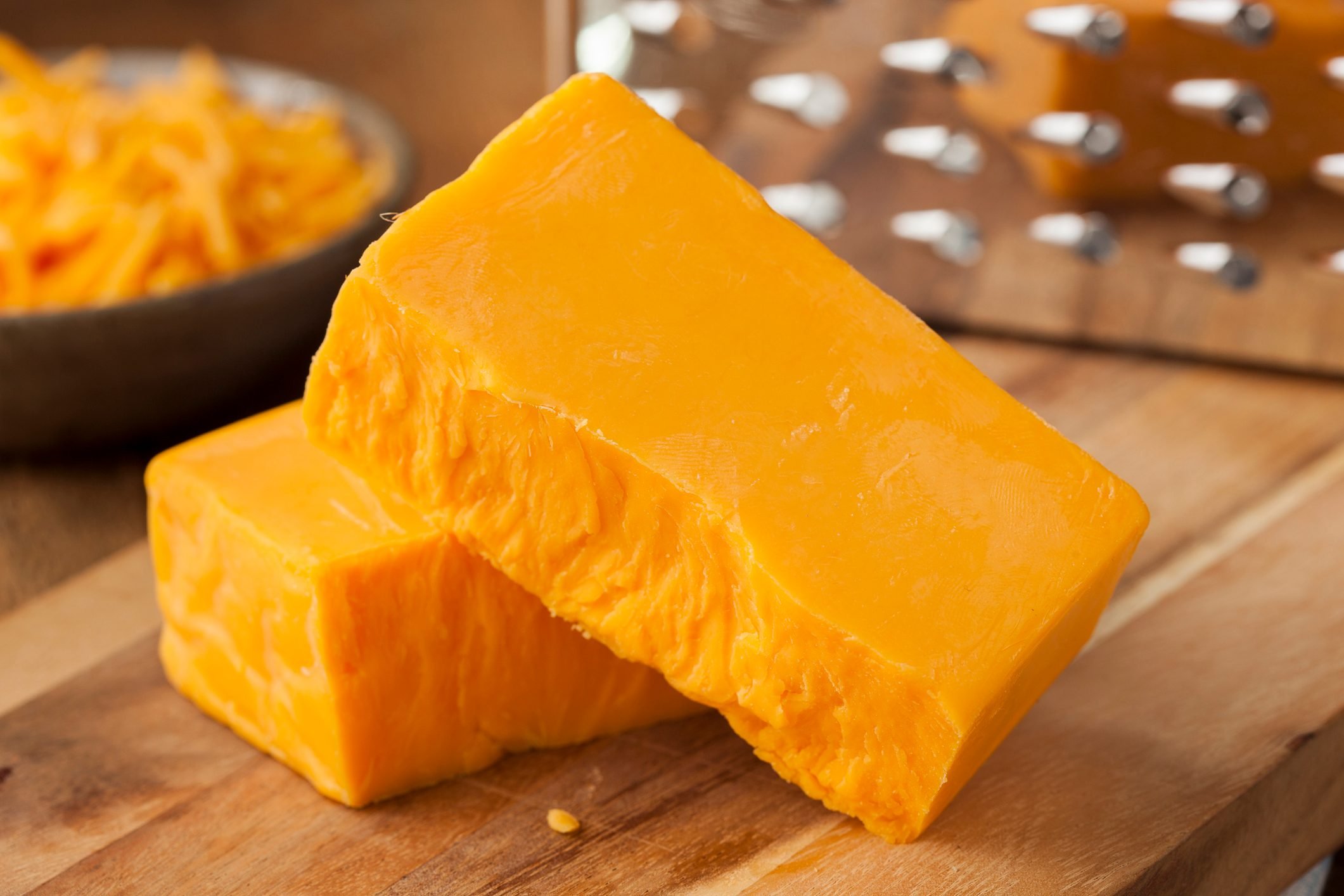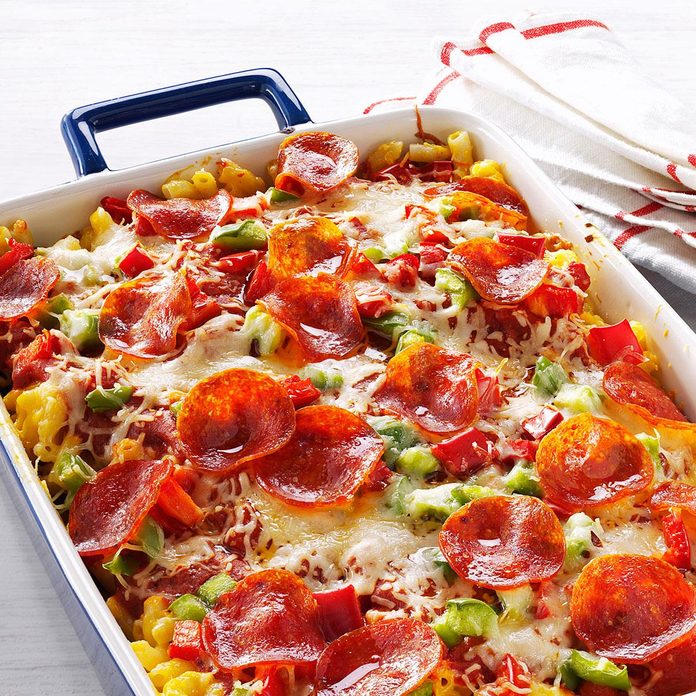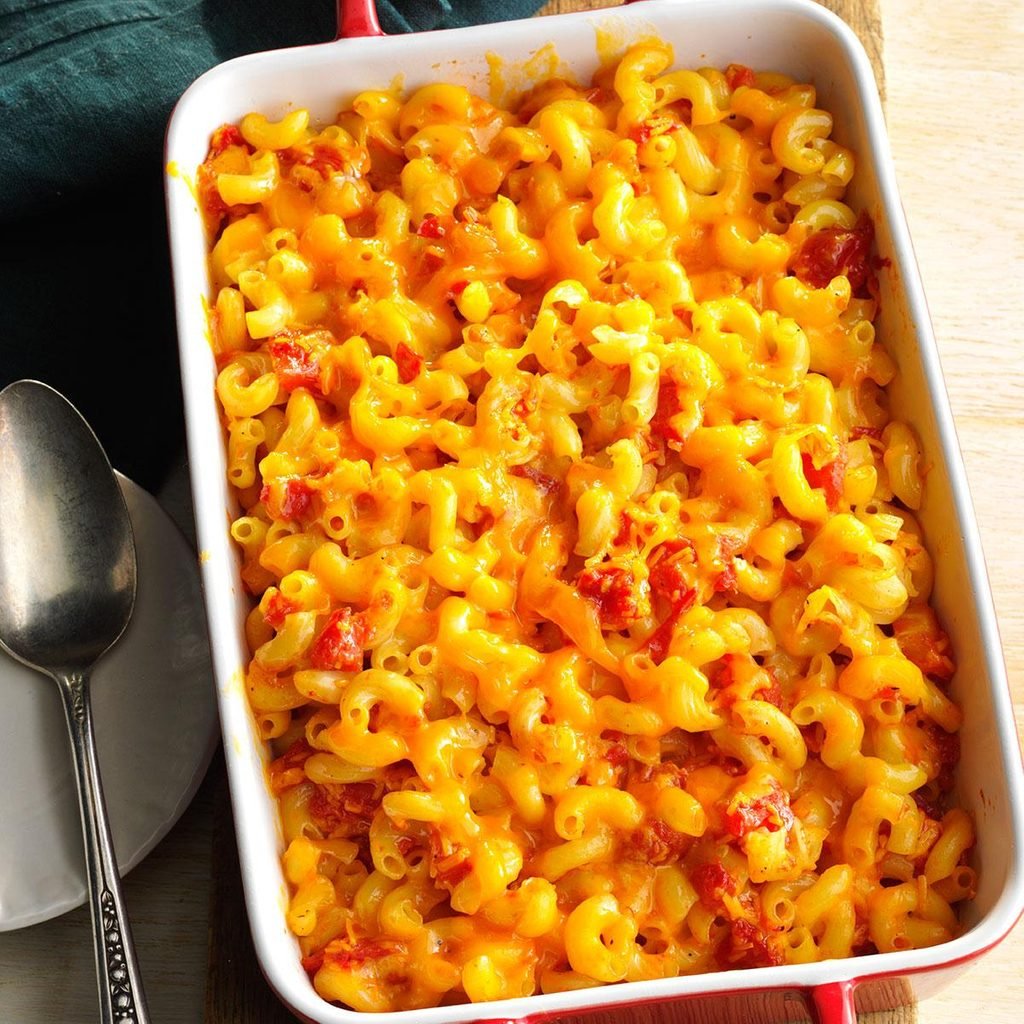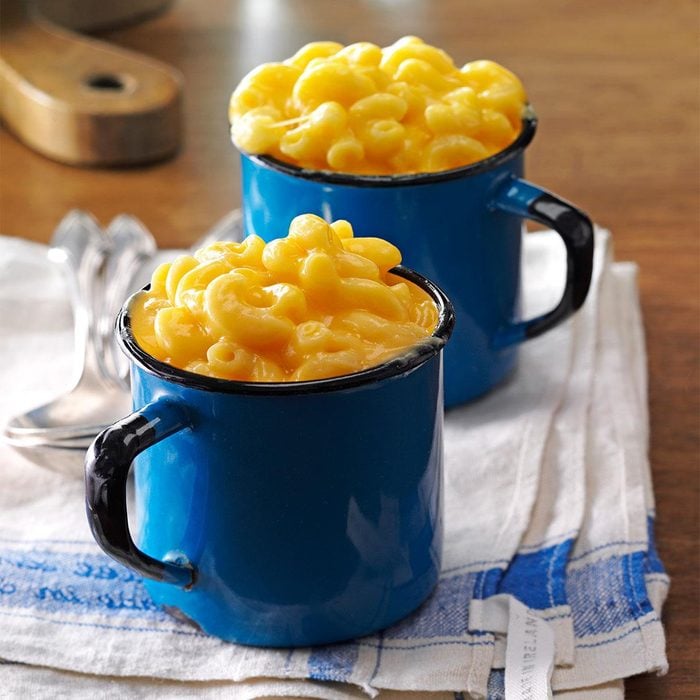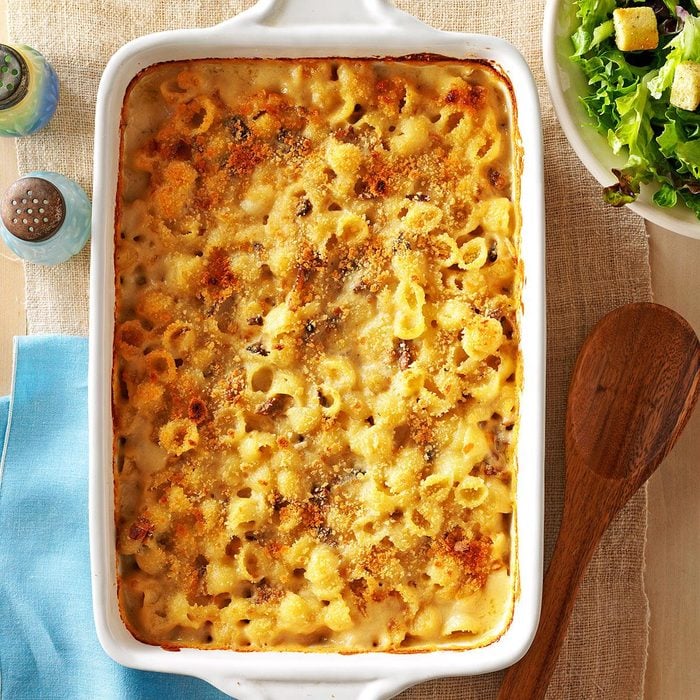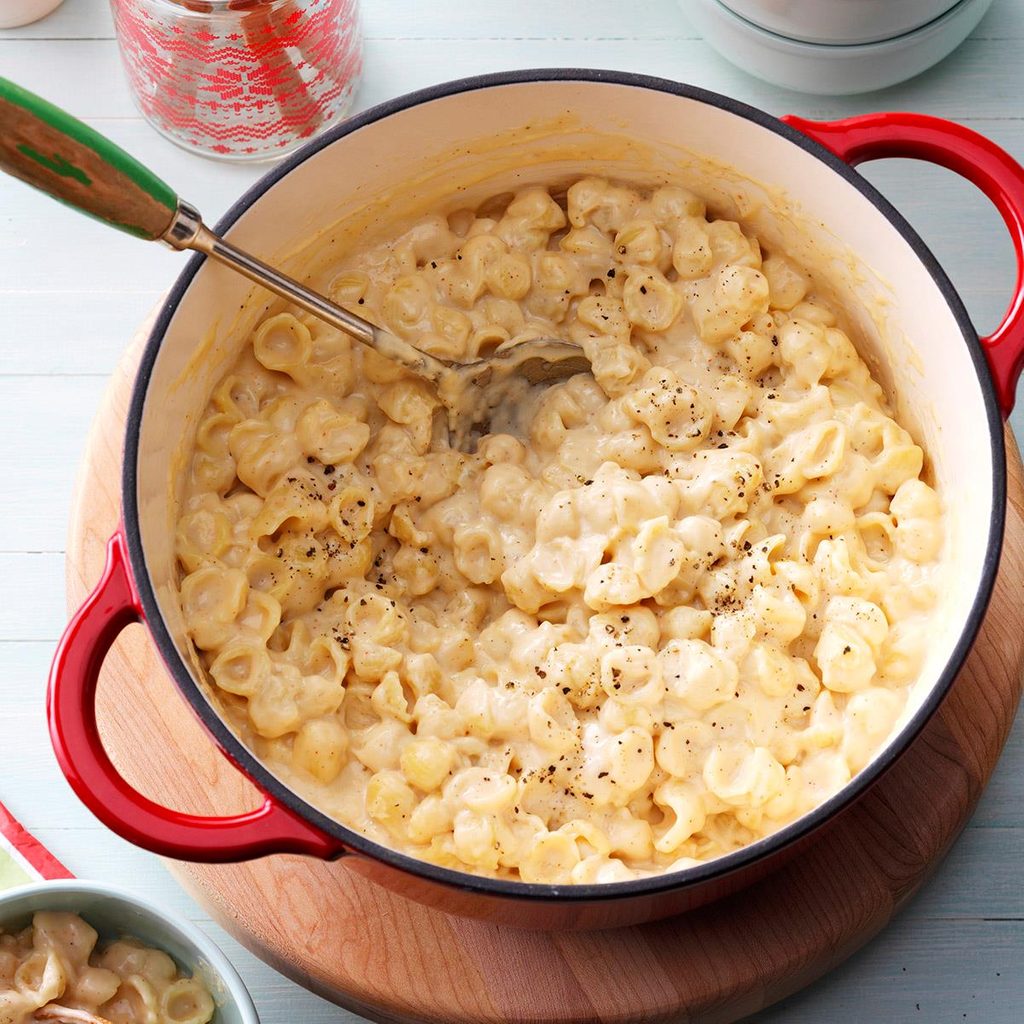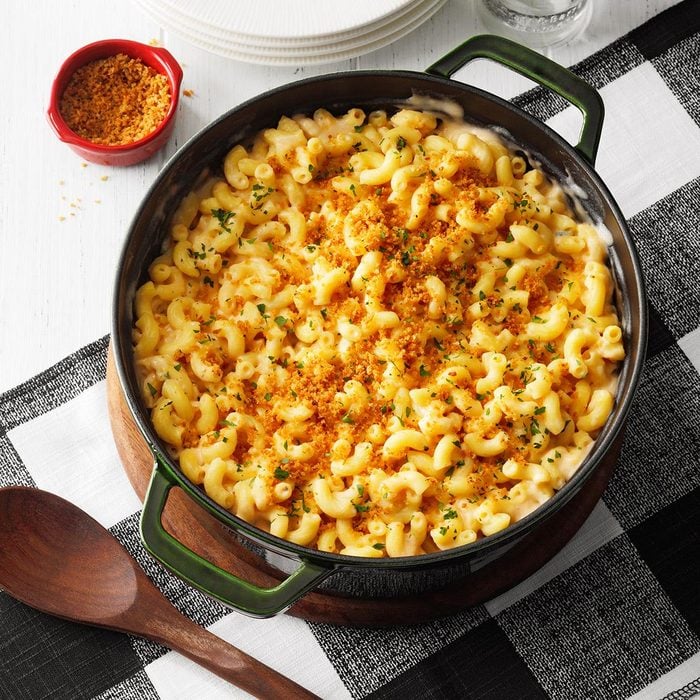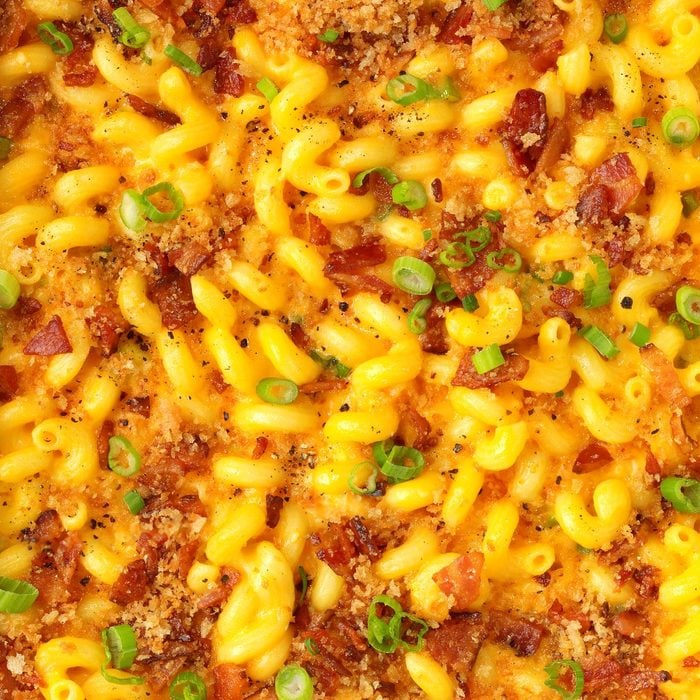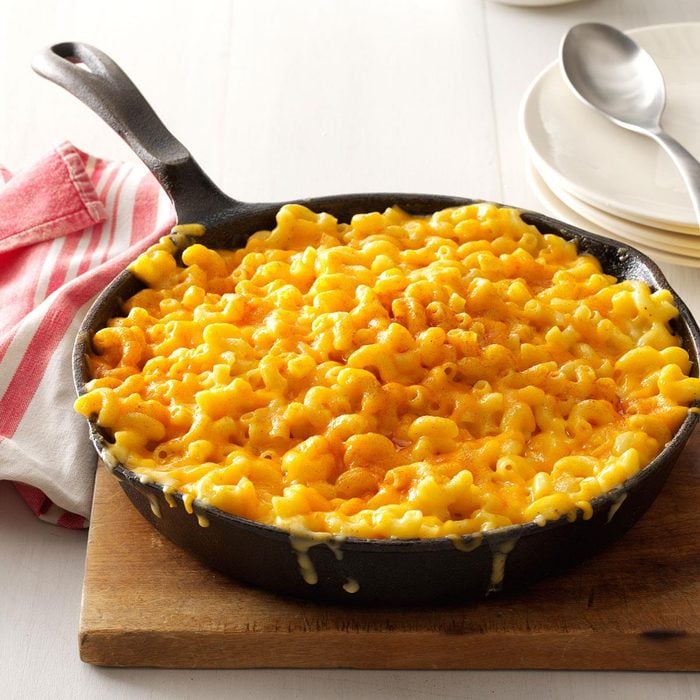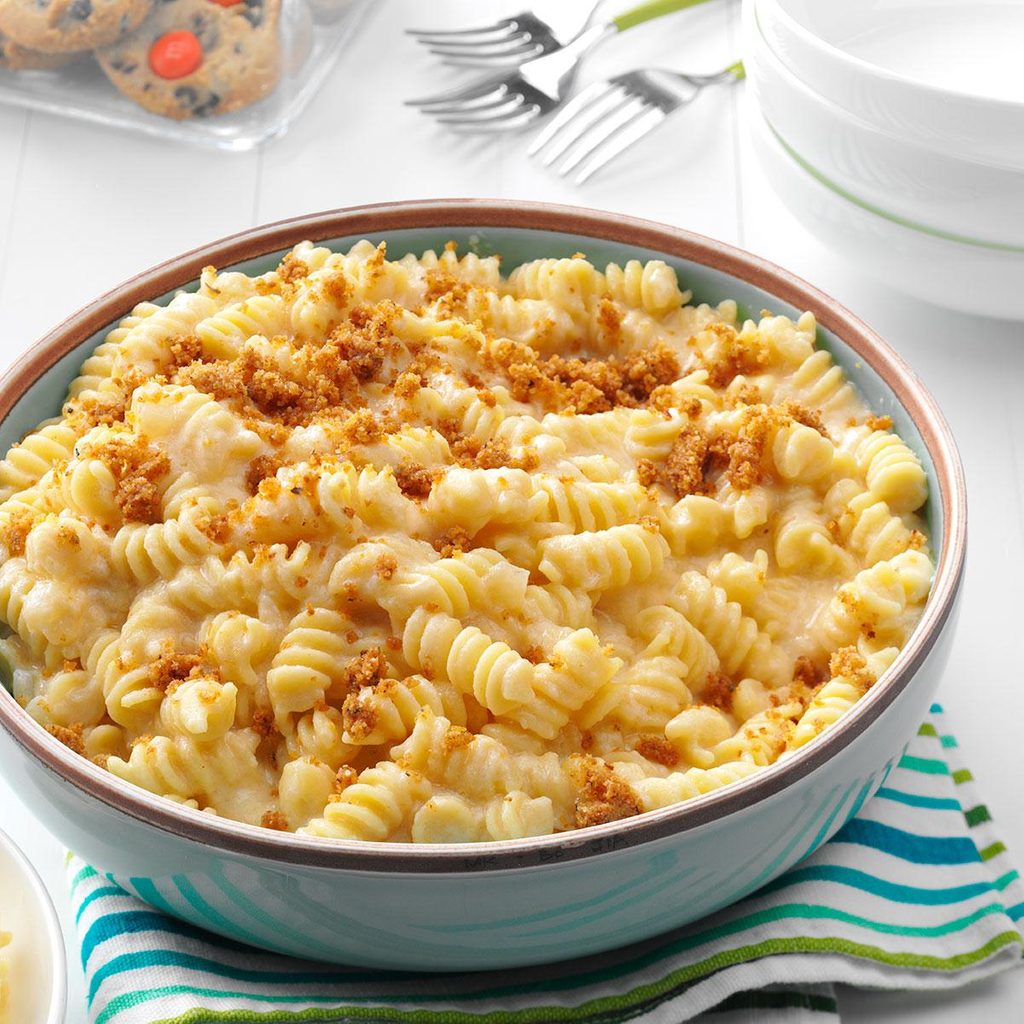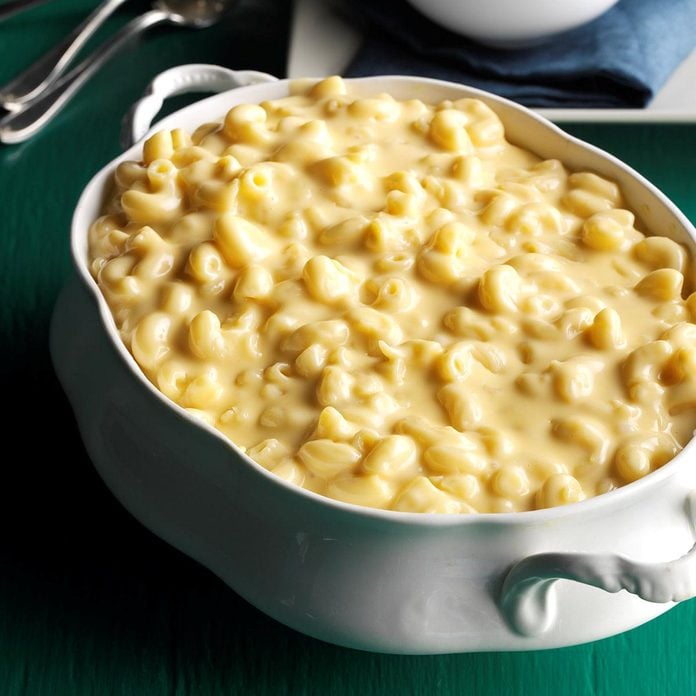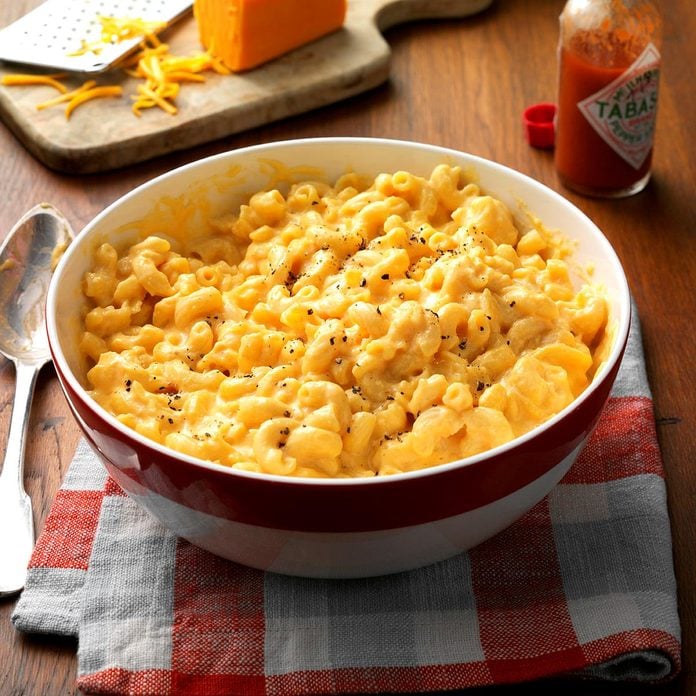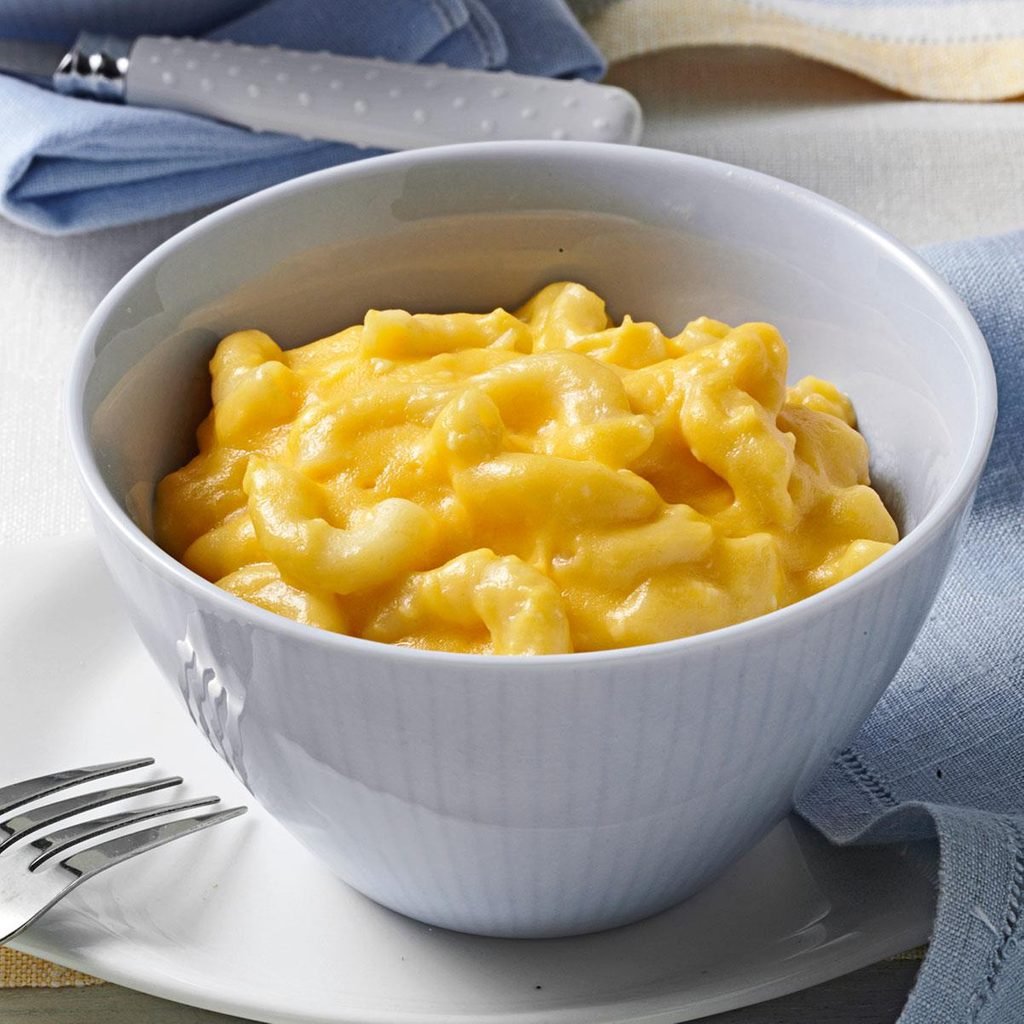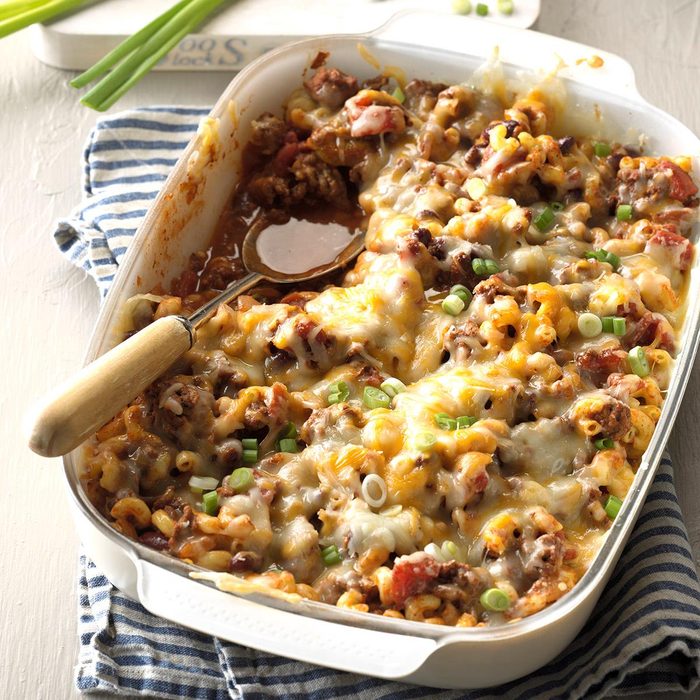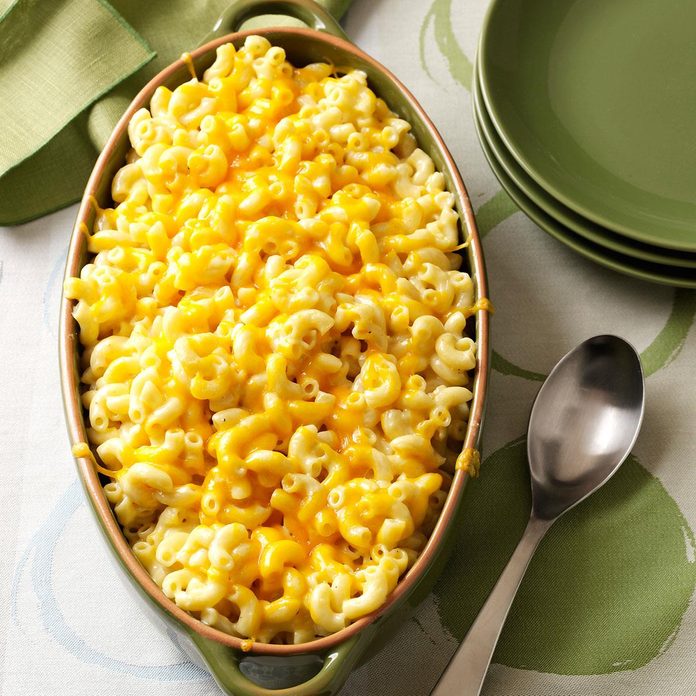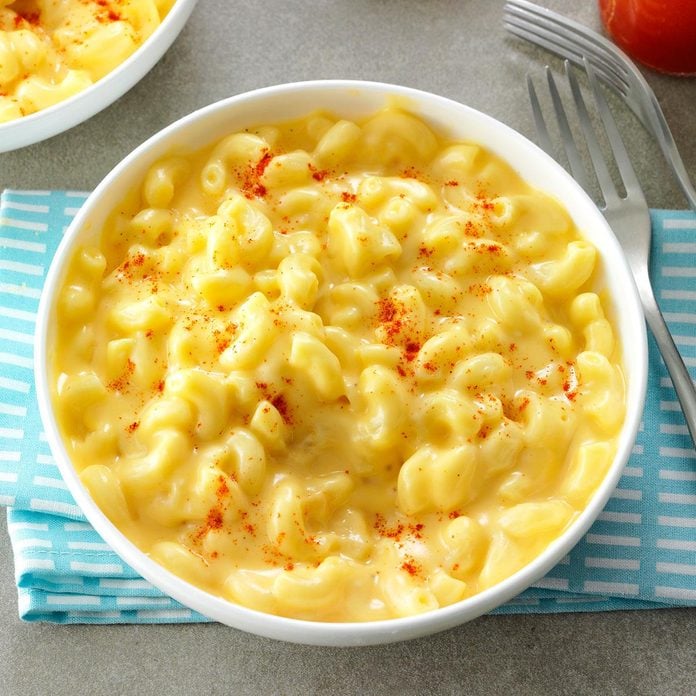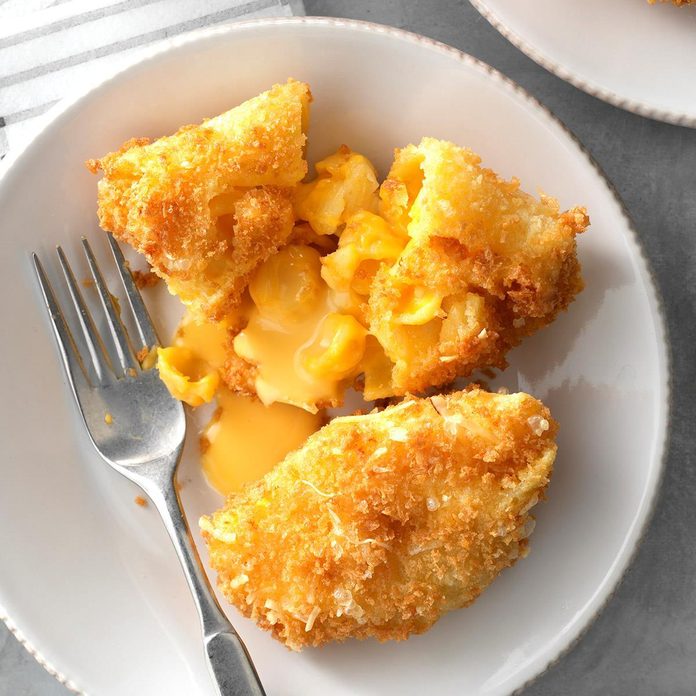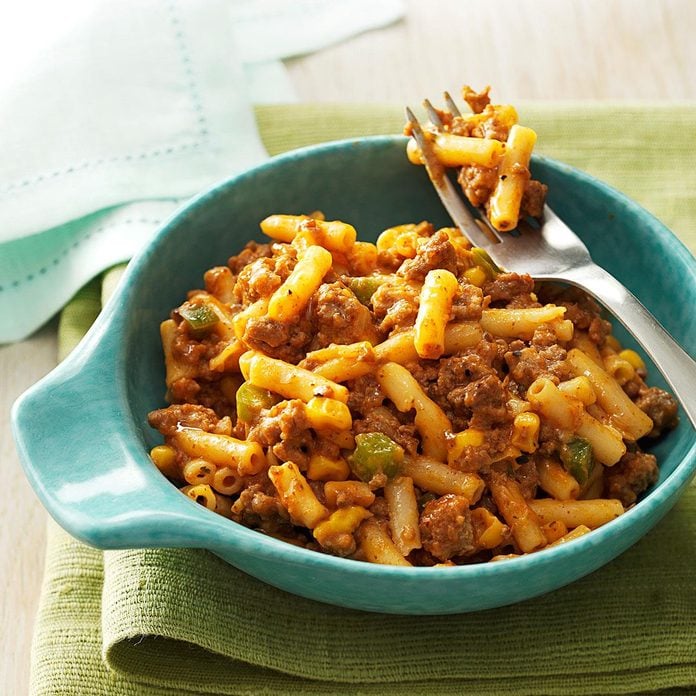There’s so much to love about cheese. And while some of us may count Gouda or American cheese as our favorite, cheddar cheese is often the most popular choice of all. You know cheddar can range from sharp or mild with a creamy texture. But why is cheddar cheese orange?
If you’ve ever wondered about this while making mac and cheese, here’s the explanation.
Why Is Cheddar Cheese Orange?
Beta-Carotene in Grass
Several centuries ago, English cheesemakers produced cheese with a yellow tone thanks to the milk from certain cows. These cows, often Jersey and Guernsey breeds, ate a lot of grass that was packed with beta-carotene, which gave the milk an orange-yellow tone.
Back then, cheddar cheese with a yellow hue was seen as a sign of quality. But as fraudsters have existed in some form for centuries, cheesemakers would use carrot juice or marigold to color their pale cheese and make it look higher quality. The tendency of adding color to cheese stuck around—and now most of us think cheddar cheese is supposed to be orange!
Annatto
Of course, in the modern era, most cheesemakers aren’t coloring cheddar with marigold or carrot juice. Nowadays, people mostly use annatto, a food coloring made from the achiote tree, which gives it that orange hue we look for. The idea is not to change the flavor of the cheese at all, but to make the color more of what history has told us to expect.
Is All Cheddar Cheese Orange?
Nope. Some cheesemakers, particularly in the northeastern United States, choose to produce to white cheddar cheese. That won’t affect the flavor of your cheddar cheese recipes, though it might confuse your brain a bit. If your cheese of the month club sends you a block of white cheddar, don’t worry—it’ll still have a familiar flavor and texture.
Every Way to Make Mac and Cheese
 Taste of Home
Taste of Home
Even people who have had their own homemade baked macaroni and cheese recipe for years ask for mine when they taste this crumb-topped version. For the best baked mac and cheese, use extra-sharp cheddar cheese for more flavor. —Shelby Thompson, Dover, Delaware
<p class="listicle-page__cta-button"><a href="https://www.tasteofhome.com/recipes/baked-mac-and-cheese/" target="_blank" rel="noopener">Go to Recipe</a></p>
Buffalo Chicken Mac and CheeseI am the mac and cheese maker for all family functions, and this version was created with my love of buffalo wings in mind. This spicy and tangy three-cheese macaroni is a huge hit at tailgates and potlucks. —Caitlin Hawes, Westwood, Massachusetts
Copycat Chick-fil-A Mac and CheeseChick-fil-A is famous for its rich, creamy mac with a baked crispy top layer, and this copycat mac and cheese recipe stays true to the original. It features a blend of sharp cheddar, tangy Romano, nutty parmesan and melty American cheese and is baked in the oven for nice crunch on top. —Taste of Home Test Kitchen
Skillet Mac and CheeseThis creamy mac and cheese is so simple it’s almost too easy! Kids really go for the rich cheese flavor, but I’ve never met an adult who didn’t love it just as much. —Ann Bowers, Rockport, Texas
Pulled Pork Mac and CheeseMeet your new favorite mash-up: pulled pork mac and cheese. Pulled pork is swirled into the creamy pasta, and the dish is baked until it’s bubbly and has crispy golden-brown edges. It's a great option to bring to a potluck, especially if you want to be invited back! —Taste of Home Test Kitchen
Seafood Mac and CheeseI wanted to try a luxurious version of mac and cheese with two of my favorite ingredients; lobster and cavatappi pasta. The result features gruyere, cheddar cheese and the perfect mix of seasonings—a little cayenne and nutmeg. —Rose Muccio, Methuen, Massachusetts
Cottage Cheese Mac and CheeseHomemade cottage cheese mac and cheese is made even better with salty, tangy cottage cheese and two kinds of cheddar. Not only does cottage cheese add a lovely tanginess to this decadently rich mac and cheese, but it’s also high in protein. —Taste of Home Test Kitchen
Cajun Mac and CheeseThis special mac and cheese recipe is the perfect combination of rich cheddar and pepper jack cheeses, smoky andouille sausage and touch of heat from Cajun seasoning. If you make it once, be ready for friends and family to ask you to make again! —Taste of Home Test Kitchen
Tuna Mac and CheeseWe all know (and love!) tuna pasta salad or tuna noodle casserole. But tuna mac and cheese? Yes, please! The mild tuna and creamy, cheesy, buttery and toasty mac and cheese come together to create a decadent flavor combination of simple pantry ingredients. —Taste of Home Test Kitchen
Four-Cheese Mac and CheeseExperience a heavenly blend of cheeses perfectly combined in this classic comfort food casserole. Al dente pasta is enveloped in a velvety cheese sauce that combines the sharpness of aged cheddar, the nuttiness of Gruyere, the creamy indulgence of fontina and the salty punch of Parmesan. —Taste of Home Test Kitchen
Jalapeno Mac and CheeseYep, get ready for a comfort food riff on the classic jalapeno popper appetizer! First chop up a few spicy peppers and add them to a rich pasta sauce filled with gooey mozzarella, sharp cheddar and cream cheese, then bake it to create a melty center and crispy top. —Taste of Home Test Kitchen
Hot Dog Mac and CheeseComforting mac and cheese with hot dogs is a nostalgic combo that brings you back to simple but beloved school-night dinners. This homemade casserole version gives you an ultra creamy sauce and total control of the ingredients. Add some roasted broccoli or a tossed salad to complete the meal. —Taste of Home Test Kitchen
Sausage Mac and CheeseAdding sausage to mac and cheese makes the classic even cozier! The secret here is using a blend of cheeses and cream cheese, then mixing in browned bulk Italian sausage for extra protein and flavor. —Taste of Home Test Kitchen
Pimiento Mac and CheesePimento mac and cheese is the happy result of two of the South's most beloved comfort dishes combining into one. Classic pimento cheese is a rich, creamy and tangy blend of shredded cheese, mayonnaise, and and pimiento peppers, served as a dip with crackers and veggies or made into sandwiches on white bread. It also is a fantastic enhancement to homemade mac and cheese. Bring this special mac and cheese to your next gathering and watch it steal the show. —Taste of Home Test Kitchen
Crockpot Mac and CheeseThis classic casserole is a rich and cheesy meatless main dish. I've never met anyone who didn't ask for a second helping. —Bernice Glascoe, Roxboro, North Carolina
Air-Fryer Mac and CheeseUse your favorite kitchen appliance to make this creamy mac and cheese. The air-fryer gives this pasta dish a nice, cheesy crust finish. —Taste of Home Test Kitchen
Lobster Mac and CheeseAnytime I cook with a cast-iron skillet I think of my Grammy, and this lobster mac and cheese is no exception. If you’re like me, then there’s no such thing as too much cheese, so add in as much as you’d like. —Erin Isaac, Columbus, Ohio
Pizza Macaroni & CheeseMy grandma made this for us once when she came to visit and I never forgot just how good it was. Since my kids love anything with pepperoni and cheese, I thought they'd enjoy it just as much as I did. —Juli Meyers, Hinesville, Georgia
My Mother's Mac and CheeseI remember my mother sending me to the store for 15 cents worth of cheese. The butcher would cut off a slice from a gigantic wheel covered with a wax-coated cloth. Mother would then blend that cheese into this tasty dish. Today, the memory of her cooking is like food for my soul. —Phyllis Burkland, Portland, Oregon
Macaroni and Cheese with ChickenPrep once and feed the family twice when you double this chicken mac and cheese and freeze half of it. I created it for the people I love most, using ingredients they love most. —Angela Spengler, Tampa, Florida
Easy Slow-Cooker Mac & CheeseMy sons always say I'm the best mom in the world when I make this creamy mac-and-cheese perfection. Does it get any better than that? —Heidi Fleek, Hamburg, Pennsylvania
Porcini Mac & CheeseThis recipe was inspired by a mushroom mac and cheese I had at a local restaurant. I incorporated the fall flavor of a pumpkin ale, and it turned out better than the original. —Laura Davis, Chincoteague, Virginia
White Cheddar Mac and CheeseMy mac and cheese is simple and has lots of flavor from the cheeses and ground chipotle chile. I use conchiglie pasta because its shape allows more melted cheese to pool inside. Yum! —Colleen Delawder, Herndon, Virginia
Instant Pot Mac and CheeseReady in only 25 minutes, this gooey, cheesy Velveeta recipe reminds me so much of my grandma's macaroni and cheese. It is easier to make than from a box and has a nice homemade touch from the pepper. —Jennifer Stowell, Deep River, Iowa
Bistro Mac & CheeseI like to serve this mac & cheese with a salad and crusty bread. It's a satisfying meal that feels upscale, but will fit just about any budget. And because the Gorgonzola is so mild in this dish, even the kiddos will go for it. —Charlotte Giltner, Mesa, Arizona
Cavatappi Mac and CheeseDive fork-first into oodles of noodles baked to bubbly perfection and coated with a to-die-for sharp cheddar cheese sauce in this cavatappi, a grown-up version of mac and cheese. Hot sauce lends mild heat that’s delectable with the smoky topping. —Barbara Colucci, Rockledge, Florida
Homey Mac & CheeseI also call this "my grandson's mac and cheese." Zachary has been to Iraq and Afghanistan with both the Marines and Navy, and I've been privileged to make his favorite casserole for him for over 20 years. —Alice Beardsell, Osprey, Florida
Triple Cheese TwistsOur stovetop macaroni and cheese is extra special, thanks to the buttery crumb topping. —Taste of Home Test Kitchen
Potluck Macaroni and CheeseYou'll always have a winner at the potluck when you bring macaroni and cheese. Here's an extra-rich, creamy version for the slow cooker. —Jennifer Blondek, Chicopee, Massachusetts
Easy Chili MacThis combines chili with one of my favorite pasta dishes. I often serve it for company or potlucks and occasionally add taco seasoning or use beanless chili and add black beans. —Lee Steinmetz, Lansing, Michigan
Makeover Slow-Cooked Mac ‘n’ CheeseThis recipe is a clear example of comfort food at its finest; it's rich, hearty and extra cheesy. And because it's made in the slow cooker, it's also extremely easy. —Shelby Molina, Whitewater, Wisconsin
Buttermilk Mac ‘n’ CheeseOnce you taste this version of an all-time favorite comfort food, you may never make the regular kind again. It's my most-requested recipe. —Donna Fancher, Lawrence, Indiana
Veggie Mac and CheeseThis creamy mac and cheese definitely doesn't come from a box! Fresh veggies add crunch and color and will leave everyone asking for seconds. —Marsha Morril, Harrisburg, Oregon
Chili Mac CasseroleThis cheesy casserole uses several of my family's favorite ingredients, including macaroni, kidney beans, tomatoes and cheese. Just add a leafy salad for a complete meal. —Marlene Wilson, Rolla, North Dakota
Over-the-Top Mac ‘n’ CheeseThis delicious dish is the ultimate comfort food. A blend of five cheeses, it makes a beautiful entree or a special side. I served it at our Thanksgiving dinner, and it received rave reviews. —Connie L McDowell, Greenwood, Delaware.
Stovetop Macaroni and CheeseWhen I was a girl, Mama used Texas longhorn cheese in this recipe. After it melted all over the macaroni, I loved to dig in and see how many strings of cheese would follow my spoonful. —Imogene Hutton, Brownwood, Texas
Italian Three-Cheese MacaroniMy husband is a self-proclaimed mac-and-cheese connoisseur and says that this is his favorite version. The Italian seasoning and tomatoes really complement the pasta and cheeses. —Adriane Mummert, Lancaster, Pennsylvania
Spinach Beef Macaroni BakeThis hearty casserole is great for a family reunion or church supper. I've also made half the recipe for family gatherings. It's become a special favorite of my grandson-in-law and great-grandson, who often ask me to serve it when they're visiting. —Lois Lauppe, Lahoma, Oklahoma
Deep-Fried Mac & Cheese ShellsI created this deep fried mac and cheese recipe for my husband. He describes this recipe as unbelievably delicious because of the crispy deep-fried coating on the outside and the creamy richness on the inside. —Shirley Rickis, The Villages, Florida
Jalapeno-Bacon Mac & CheeseAll my dishes use ingredients that are usually sitting in the fire department pantry. I just adjust amounts depending on how many people we have on duty that day. This is always popular. —Nick Kaczor, New Hudson, Michigan
Deluxe Baked Macaroni and CheeseI've been cooking and baking for many years, but I've only recently begun creating my own recipes. By adding diced ham, tomatoes, several cheeses and a hint of Dijon mustard, I turned this super creamy mac and cheese into the ultimate comfort food. —Kathy Yarosh, Apopka, Florida
Smoked Gouda Mac and CheeseRev up classic mac and cheese with this ultra-comforting smoked gouda version. It’s creamy, cheesy and irresistibly smoky. —Taste of Home Test Kitchen
Hearty Mac & Cheese“Whether a cold winter night or rainy summer day, this is quick-and-easy comfort food at its very best!” And a great way to jazz up boxed macaroni mix. —Carol Wohlgemuth, Riding Mountain, Manitoba
